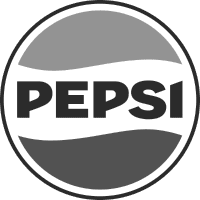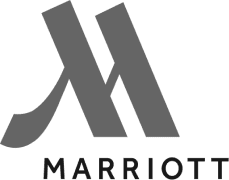Transparent Screen Kiosks
Next generation technology that offers a cutting-edge way to engage customers while maintaining visibility of products and environments behind the display. By blending digital content with the physical world, these screens are ideal for retail windows, showrooms, exhibitions, and numerous other venues. They enable dynamic storytelling, product information, and branding without blocking the view − creating a futuristic, high-impact experience that drives attention, interaction, and ultimately sales.
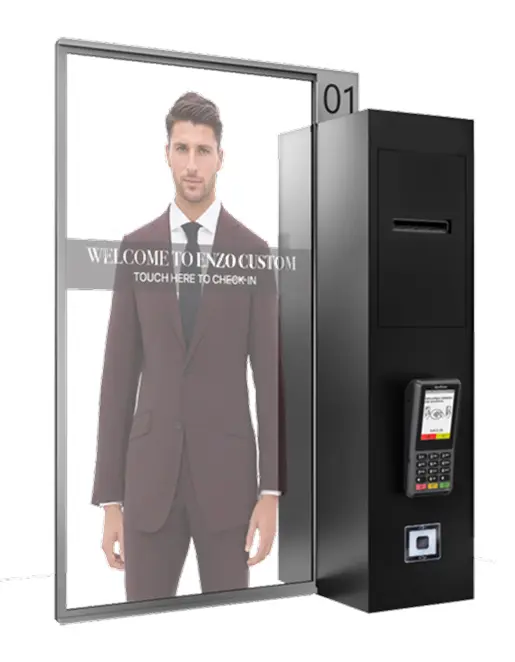
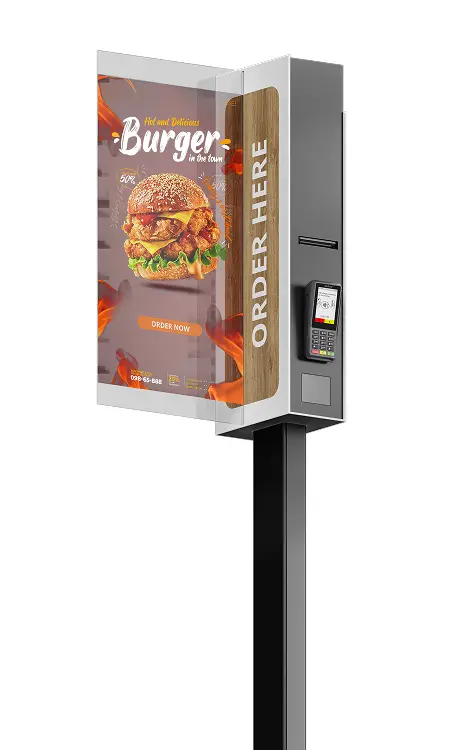
See-through advertising that doesn't hide your products
Transparent LCD and OLED displays turn your storefront or product showcase into a dynamic sales tool − captivating customers with vibrant HD promotions, brand storytelling, and real-time special offers directly on the glass while maintaining full visibility of the products behind the screen.
Digital signage reimagined for the physical world
Why integrate attention-grabbing, immersive, and captivating content seamlessly into your environment? Because shoppers can interact with touch-driven content like guided comparisons, customizations, and tutorials while being prompted for adjacent products − thereby boosting engagement and purchase intent right at the point of decision.
Next level storytelling with an interactive twist
Transform passive viewing into immersive brand experiences to engage users like never before. Whether showcasing products or dynamic content, these interactive displays invite exploration with embedded calls to action, targeted promotions, and data capture opportunities. In doing so, they don’t just tell stories − they drive monetization and measurable impact.
Trusted by industry leaders to power better customer experiences
Transparent LED
Transparent LED (Light Emitting Diode) screens are advanced display panels that allow viewers to see digital content overlaid on physical objects or environments visible through the screen. Unlike traditional screens, these displays are designed to let light pass through, creating a “transparent” effect. By emitting light without the need for a backlight, these screens offer more flexibility in design than traditional screens. When paired with touch sensors, they allow users to browse product features, view multimedia content, and navigate interfaces directly on the glass.
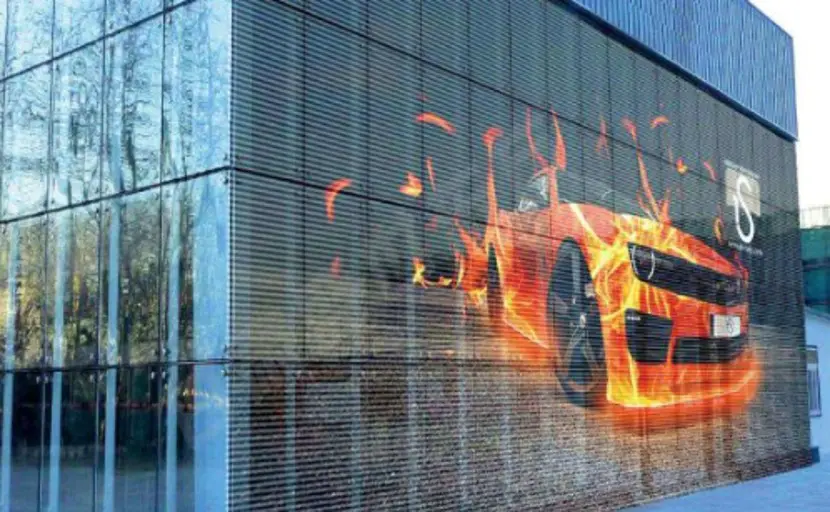
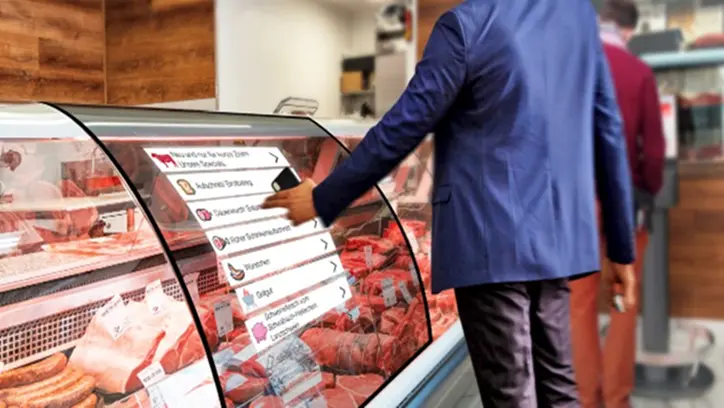
Transparent OLED
Transparent OLED (Organic Light-Emitting Diode) screens are advanced display panels where each pixel emits its own light − no backlight required. This self-emissive technology allows the screen to be thinner, more energy-efficient, and significantly more transparent than traditional displays. When turned off, the screen appears like a clear pane of glass; when active, it delivers vibrant, high-contrast visuals directly on the transparent surface.
Transparent LCD
Transparent LCD (Liquid Crystal Display) screens are display panels that allow viewers to see digital content visible through the screen but often require a backlight to illuminate the image. When paired with touch sensors, transparent LCDs become interactive − turning objects like coolers into powerful storytelling platforms that captivate shoppers the moment they walk by. And by placing these units in high-traffic locations, they further transform into dynamic engagement zones − making it the perfect solution for brands that want maximum impact where buying decisions happen fast.

Other hardware options
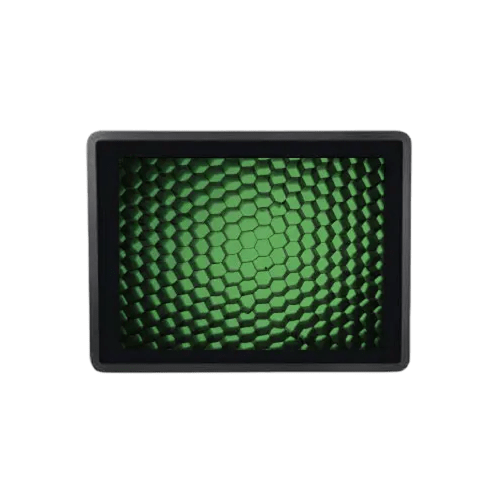
Small Format Kiosks
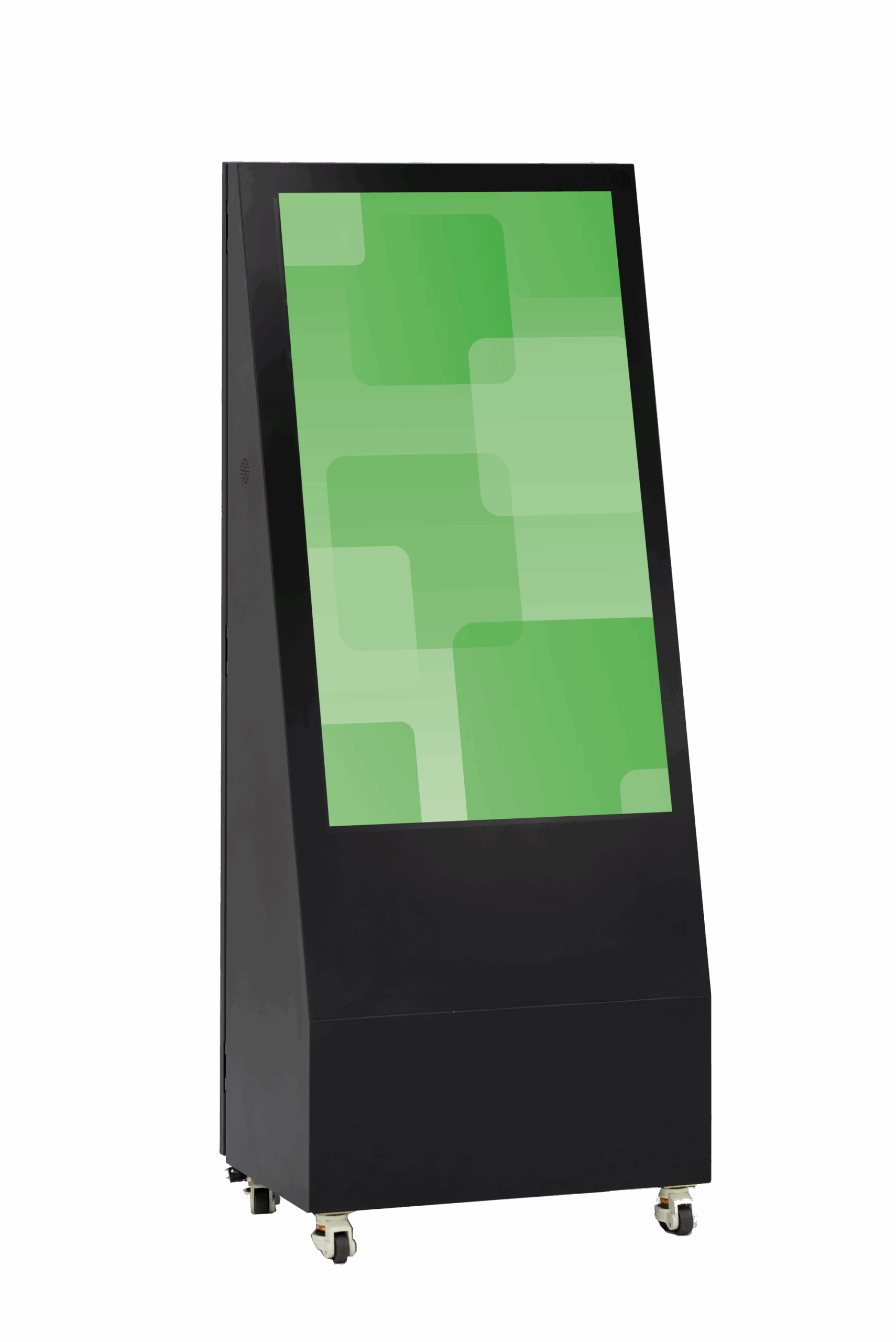
Large Format Kiosks
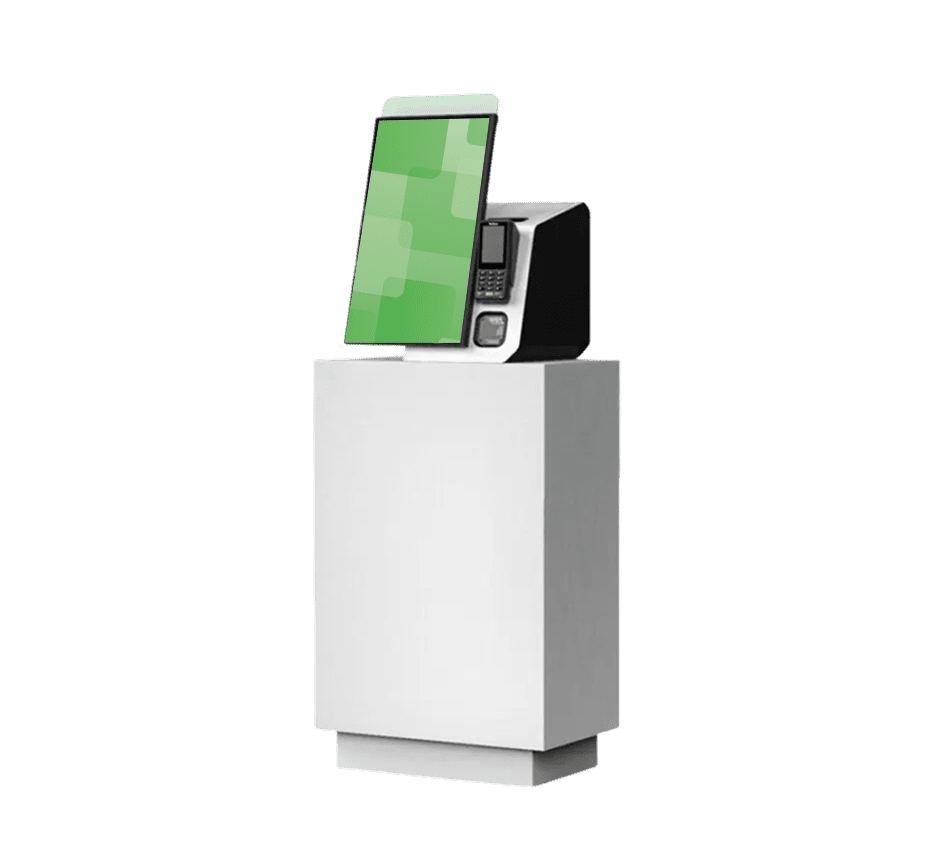
Transactional Kiosks
More Information
Revolutionary Transparent Display Technology in Interactive Kiosks
Transparent kiosk technology represents a paradigm shift in digital display solutions, merging the physical and digital worlds through see-through interactive screens. These innovative systems utilize OLED (Organic Light-Emitting Diode) or LCD technology with transparent substrates, allowing viewers to see both digital content and physical objects behind the display simultaneously. MetroClick’s transparent kiosks achieve up to 80% transparency while maintaining vibrant color reproduction and sharp image quality, creating captivating visual experiences that traditional opaque displays cannot match.
The engineering behind transparent displays requires precise control of light transmission and pixel illumination. Unlike conventional displays that rely on backlighting, transparent OLED screens emit light directly from each pixel, enabling true transparency in non-illuminated areas. This technology eliminates the need for traditional backlighting systems, reducing power consumption while achieving superior contrast ratios that make content appear to float in mid-air.
Optical Clarity and Visual Impact Optimization
Achieving optimal visual performance in transparent displays requires careful calibration of brightness, contrast, and transparency levels based on ambient lighting conditions. MetroClick’s transparent kiosks incorporate adaptive brightness controls that automatically adjust display intensity to maintain visibility in varying environments, from dimly lit museums to bright retail showrooms. The systems can dynamically modify transparency levels, allowing operators to emphasize either the digital content or the physical objects behind the screen.
Anti-reflective coatings applied to both surfaces of the transparent display minimize glare and ghosting effects that could compromise the viewing experience. These specialized treatments maintain clarity while preserving touch sensitivity for interactive applications. The result is a crystal-clear display that showcases products or environments behind the screen while overlaying relevant digital information.
Dual-Sided Display Capabilities
Many transparent kiosk implementations leverage the unique ability to display different content on front and rear surfaces simultaneously. This dual-sided functionality doubles the effective display area without increasing the physical footprint, making transparent kiosks exceptionally space-efficient. Retail applications might show product information to customers on one side while displaying inventory data to staff on the other side.
Content synchronization between sides enables coordinated presentations that enhance storytelling capabilities. Museums can display artifact descriptions facing visitors while showing conservation notes to curators on the opposite side. This versatility transforms single kiosks into multi-purpose communication platforms serving diverse audience needs simultaneously.
Architectural Integration and Design Flexibility
Seamless Environmental Blending
Transparent kiosks excel in architecturally sensitive environments where traditional displays would disrupt visual harmony. The see-through nature allows these installations to complement rather than dominate their surroundings, preserving sight lines and maintaining spatial openness. High-end retail stores utilize transparent kiosks to display product information without obscuring merchandise displays or architectural features.
Custom fabrication options enable transparent kiosks to adopt various form factors beyond standard rectangular screens. Curved transparent displays follow architectural contours, while modular systems create expansive transparent video walls. These design possibilities allow seamless integration into existing structures without compromising aesthetic integrity or requiring significant architectural modifications.
Showcase and Display Case Applications
Transparent kiosk technology revolutionizes traditional display cases by adding interactive digital layers to physical exhibits. Jewelry stores install transparent screens over display cases, allowing customers to view actual products while accessing detailed specifications, pricing, and availability information through touch interactions. This integration eliminates the barrier between digital information and physical products.
Museums and galleries employ transparent kiosks as protective barriers that simultaneously provide interpretive content. Visitors can examine artifacts through the transparent screen while accessing historical context, multimedia content, and interactive educational materials. This approach enhances engagement without requiring visitors to shift attention between objects and separate information panels.
Industry Applications and Use Cases
Luxury Retail and Fashion
Transparent kiosks transform luxury retail experiences by creating immersive product showcases that blend physical merchandise with digital storytelling. Fashion boutiques position transparent displays in storefront windows, allowing passersby to view actual clothing while overlaying styling suggestions, runway footage, and availability information. This technology enables 24/7 window shopping experiences even when stores are closed.
Interactive transparent mirrors in fitting rooms overlay digital clothing options onto customers’ reflections, enabling virtual try-ons without physical inventory. These systems connect to inventory databases, showing available sizes and colors while suggesting complementary items. The seamless integration of digital signage with physical retail spaces creates memorable shopping experiences that drive sales conversions.
Automotive Showroom Innovation
Automotive dealerships leverage transparent kiosks to showcase vehicle features without obscuring the actual cars. Positioned strategically around display vehicles, these screens highlight technical specifications, safety features, and customization options while customers examine the physical vehicle. Interactive configurators allow customers to visualize different colors and options overlaid on the actual car as seen on the display.
Service departments utilize transparent kiosks to explain maintenance procedures and repairs. Customers can view their actual vehicle through the transparent screen while mechanics point out specific components and explain necessary work. This transparency builds trust and helps customers understand the value of recommended services.
Advanced Content Management Strategies
Dynamic Content Layering Techniques
Creating compelling content for transparent displays requires specialized design approaches that account for varying backgrounds.MetroClick’s content management systems include transparency-aware design tools that preview how digital elements will appear against different physical backdrops. Designers can adjust opacity levels, add subtle shadows, or incorporate contrasting borders to ensure readability regardless of background variations.
Motion graphics and animations gain an extraordinary impact on transparent displays, appearing to interact with physical objects behind the screen. Retail applications might show virtual clothing overlays on mannequins, while automotive showrooms can highlight vehicle features with animated callouts that seem to emanate from actual components. These dynamic presentations create memorable experiences that static displays cannot achieve.
Real-Time Background Adaptation
Advanced transparent kiosk systems incorporate computer vision capabilities to analyze the physical space behind the display and adjust content accordingly. Cameras or sensors detect objects, lighting conditions, and viewer positions, enabling the system to optimize content presentation dynamically. This technology ensures digital elements never obscure critical physical features while maintaining maximum visual impact.
Augmented reality integration takes this concept further by allowing real-time interaction between digital content and physical objects. Users might virtually customize products visible through the transparent screen, with changes reflected immediately in the digital overlay. This seamless blend of physical and digital creates engaging experiences that drive customer interest and sales conversions.
Technical Specifications and Performance
Display Technology Fundamentals
Transparent kiosks utilize either OLED or advanced LCD technology to achieve see-through capabilities. OLED displays offer superior transparency (up to 80%) and contrast ratios since they don’t require backlighting. Each pixel emits its light, allowing true blacks and transparency in non-illuminated areas. LCD-based transparent displays typically achieve 20-70% transparency using specialized polarizers and liquid crystal configurations.
Resolution capabilities match traditional displays, with 4K (3840×2160) becoming standard for larger transparent kiosks. Refresh rates of 60Hz or higher ensure smooth motion for video content and responsive touch interactions. Color gamut coverage reaches 95% sRGB or better, maintaining vibrant imagery despite the transparent substrate.
Environmental Adaptability
Transparent kiosks must perform reliably across diverse lighting conditions. Ambient light sensors continuously monitor environmental brightness, adjusting display output to maintain optimal contrast. In bright environments, the system increases pixel brightness to overcome ambient light passing through the display. Conversely, in darker settings, brightness is reduced to prevent glare while maintaining transparency.
Temperature management presents unique challenges since traditional cooling methods might obstruct transparency. MetroClick’s transparent kiosks employ edge-mounted heat dissipation systems that maintain optimal operating temperatures without compromising the see-through effect. Operating ranges typically span 0°C to 40°C for indoor installations, with specialized versions available for outdoor applications.
Future Innovations in Transparent Display Technology
Emerging developments in transparent display technology promise even more impressive capabilities for industries such as entertainment, corporate settings, healthcare, transportation, sports, and more. Holographic transparent displays under development will project three-dimensional images that appear to float in space without requiring special viewing glasses. Switchable transparency technology will allow displays to transition between transparent and opaque states, providing privacy when needed while maintaining see-through capabilities for showcase applications.
Integration with artificial intelligence will enable transparent kiosks to recognize displayed products and automatically generate relevant content. Advanced gesture recognition will allow touchless interaction, which is valuable for hygiene-conscious environments. MetroClick continues investing in research and development to incorporate these advancing technologies, ensuring customers benefit from the latest innovations in transparent display solutions while maintaining reliability and ease of use.
For businesses seeking cutting-edge display solutions, transparent kiosks represent the future of interactive technology. Please explore our complete range of interactive kiosks, payment solutions, and specialized hospitality applications to discover how transparent display technology can transform your customer engagement strategy.




